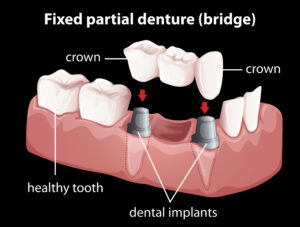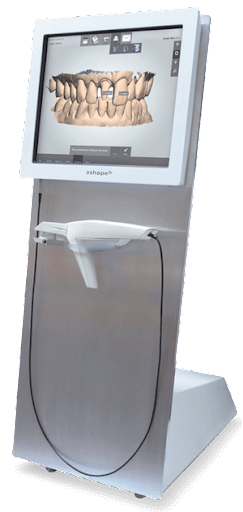Over the past five decades, a lot of research has been conducted on crown and bridge materials. This has resulted in significant improvement in understanding how their physical and chemical properties impact the clinical outcomes of treatments. Dental crowns and bridges are essential for repairing damaged teeth or replacing lost teeth. When considering dental implant treatment, patients often prioritize restoring functionality and improving aesthetics. To achieve this, it is crucial to select the right materials.
One of the key considerations is the microstructure and surface composition of dental implants. Implant materials should, ideally, be biocompatible, and resistant to corrosion and fractures. Today, the two primary options for implants are titanium and zirconia (a ceramic material).
What Goes into a Material Option/Decision?

When choosing the appropriate material for crown and abutment restorations, several factors – including the following – must be taken into consideration:
- The tooth being replaced
- The presence of para-functional habits
- Any metal allergies the patient may have
It’s important to have a thorough discussion about the benefits and limitations of each material option before making a decision.
Abutments
Abutments – which are screwed directly into dental implants as restorative components – come in various types including the following:
- Custom-Designed Crowns and Abutments
- Stock Abutments
- Porcelain Fused to Metal
Custom-Designed Abutments and Crowns (CAD/CAM)
These abutments can be machined from different materials such as the following:
- Zirconia
- Titanium
- PMMA
- Base metal
- Composite resins
- High performance polymers (HPP)
Definitive abutments – ordinarily made from zirconia, titanium, or base metals – can be used for both screw- and cement-retained restorations.
Stock Abutments
Similar to custom abutments, stock abutments can be fabricated using various materials. They are available in various angles, shapes, and margin collar heights. Compared to custom abutments, they are generally more affordable.
Porcelain Fused to Metal (PFM)
PFM dental implant-supported restorations are another option. These crowns combine porcelain and metal, with the porcelain layer being color matched to the patient’s natural teeth. But the metal margin around the gingival margin can become visible. That can make it unappealing to some patients. PFM restorations are recommended for patients seeking strength and a natural appearance.
The Pluses and Minuses
Benefits of PFM restorations:
- Durable material
- Relatively easy tooth color matching
Limitations of PFM restorations:
- Potential allergic reactions to the metals used
- Metal margins can be visually unattractive
Zirconia Dental Implant Supported Restorations
These are ceramic-type restorations that do not contain any metal. They can fracture more easily than PFM crowns but are known for their strength and durability. Zirconia crowns are an excellent choice for posterior crowns because they require enhanced strength for chewing and other habits.
Benefits/Limitations of Zirconia Restorations
Benefits of zirconia:
- Compatibility with human tissues
- Low bacterial attraction
- High strength and reasonable fracture resistance
- Minimal wear and corrosion
- Excellent aesthetics with no visible metal margins
Limitations of zirconia:
- Possible deterioration of microfractures over time
- Decreased fracture resistance if grinding is performed
- Higher cost compared to other options
Next Dental Lab Can Help You Determine the Best Option for Your Crown and Bridge Material
At Next Dental Lab, our skilled technicians possess extensive knowledge about zirconia, titanium, and PFM materials used for restorations. They are always available to discuss specific cases and provide guidance based on individual patient needs. Contact us today.

